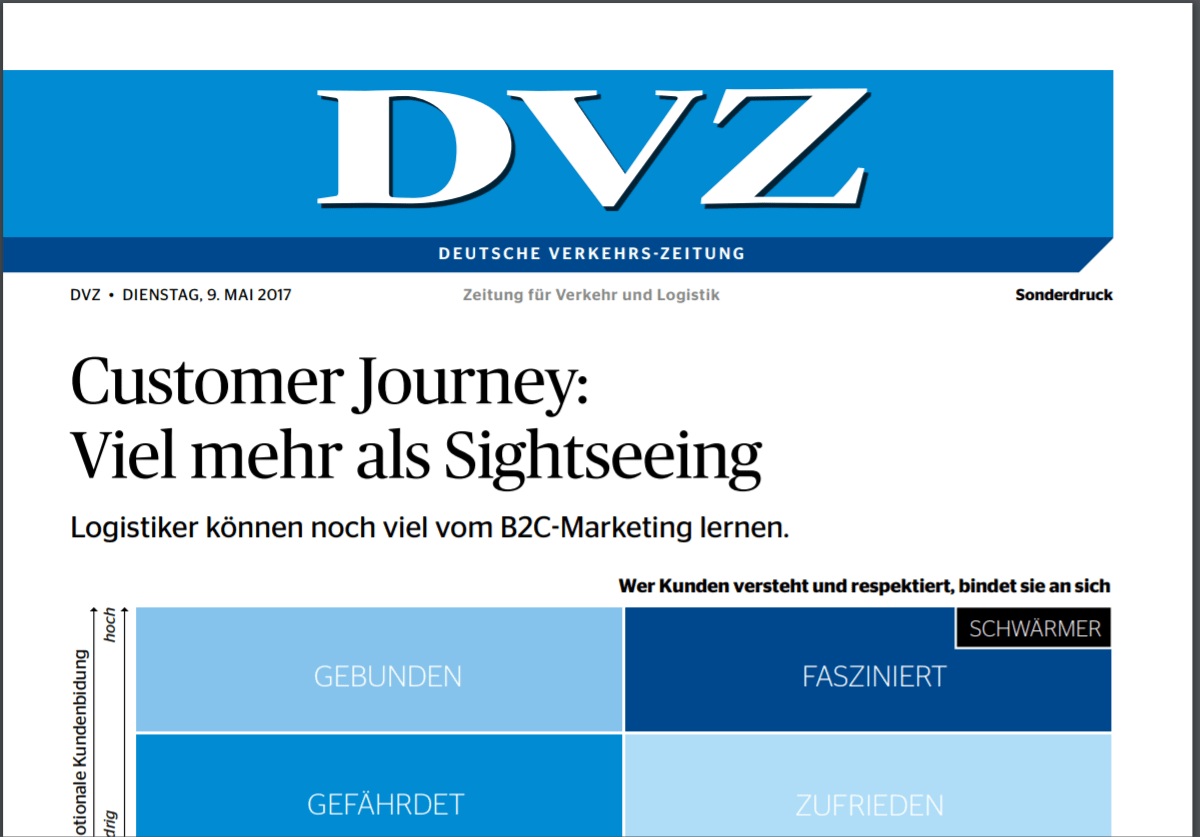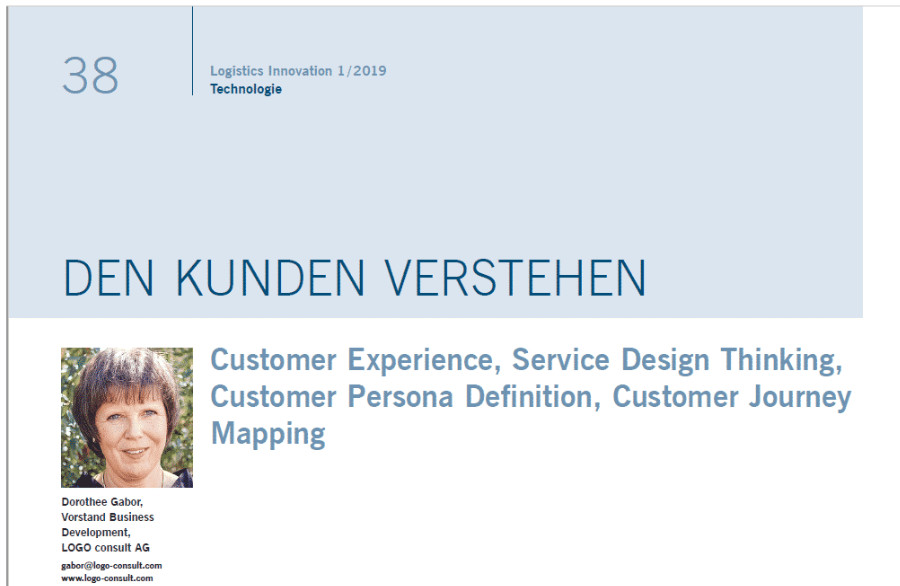What points of contact does a prospective customer or customer have before deciding to make a purchase?
Recommendations are becoming increasingly important here, not only from acquaintances or business partners, but also on the various portals. Every one of us knows the reviews on amazon or in online shops. Statistics show that these have an extremely high significance for the purchase decision.
In the B2B sector, of course, it’s not quite so simple, and in the area of logistics it’s especially so. It is still probably the exception that a company in need of transport or logistics services looks for reviews of freight forwarders and logistics providers. Of course, many likes on Facebook also make logistics companies happy, but they are probably not really decisive for the selection of a service provider. This probably puts logistics in a special position, because doctors and craftsmen as well as other service providers are now also chosen on the basis of ratings.
The famous Net Promoter Score (NPS) is then very relevant. This will probably also change in logistics in the next few years.
Do you know where your customers and potential customers come into contact with your company, your brand, your company name? Do you know what happened before the first contact with an employee in sales or customer service?
Capture the first part of the customer journey in your CRM!
In the age of Big Data, a lot of data can be captured.
Tracking cookies on websites can track which page a visitor came to you from. Social media monitoring can monitor whether a customer or prospect has sought information or left reviews about your product or company.
This is already very common in the B2C sector. A sports shoe manufacturer knows exactly on which portals a user looked for his products, what he put in the shopping basket and then didn’t buy after all. You all know this: as soon as you have researched something, you receive advertisements for this product on all websites, extremely of course in social media such as Facebook. Anyone who has looked around for hybrid or fuel cell cars after the diesel verdict, like me, knows what I mean.
In my opinion, you don’t have to take it that far in the first step. A great deal of technological effort is needed for this. And especially according to the new GDPR, it is no longer permissible to use data collected in this way for personalised marketing campaigns.
But you should already know how a prospect came to your company: through his own positive experience, through recommendation, through web research, through advertising, through campaigns.
This part of their “customer journey” definitely determines the right sales strategy.
Define the different types of customers or “personas” for the selection of the strategy!
Another important factor for the sales strategy but also for customer retention is what type your customer or prospect is. The classic salesperson knows this kind of thing. In times when you had personal relationships with all customers, this information was available in the minds of the employees. And intuitively, good employees chose the right tactics accordingly. Why people work with customer journeys and personas today has mainly to do with marketing automation. If a system knows the persona, it can automatically select the appropriate customer journey and also automatically suggest or trigger the next promising steps.
A persona that is rather critical and reserved will react positively to the possibility of downloading more detailed information or reviews from other customers.
A persona who primarily wants a great experience will be more likely to be inspired to make a purchase if you send them a link to a cool YouTube video or a voucher.
A persona who cannot make a purchase decision herself needs information to be able to convince the manager.
A persona who manages the budget himself is interested in ROI invoices, TCO or discounts.
A persona from the technical area wants information about technical features.
Whether you run these sales strategies automatically and set up good content marketing in parallel, or whether you use them to support your sales staff and give them good tips on how the sale could be successful with a certain type, is not so important.
If, like so many companies, you have made the customer experience the focus of your CRM activities, you will certainly get there better by defining your personas and customer journeys.
You can also find information on the topic of the customer journey here:
The Customer Journey – Google Future Workshop

Please also read our DVZ article on this topic https://www.logo-consult.com/newlogo/wp-content/uploads/2015/03/8011_sonderdruck_Logo-consult_2017_210x297_T01011S_low2.pdf












